Keadby Terminal Assisted Outfall Pumping Station (2024)
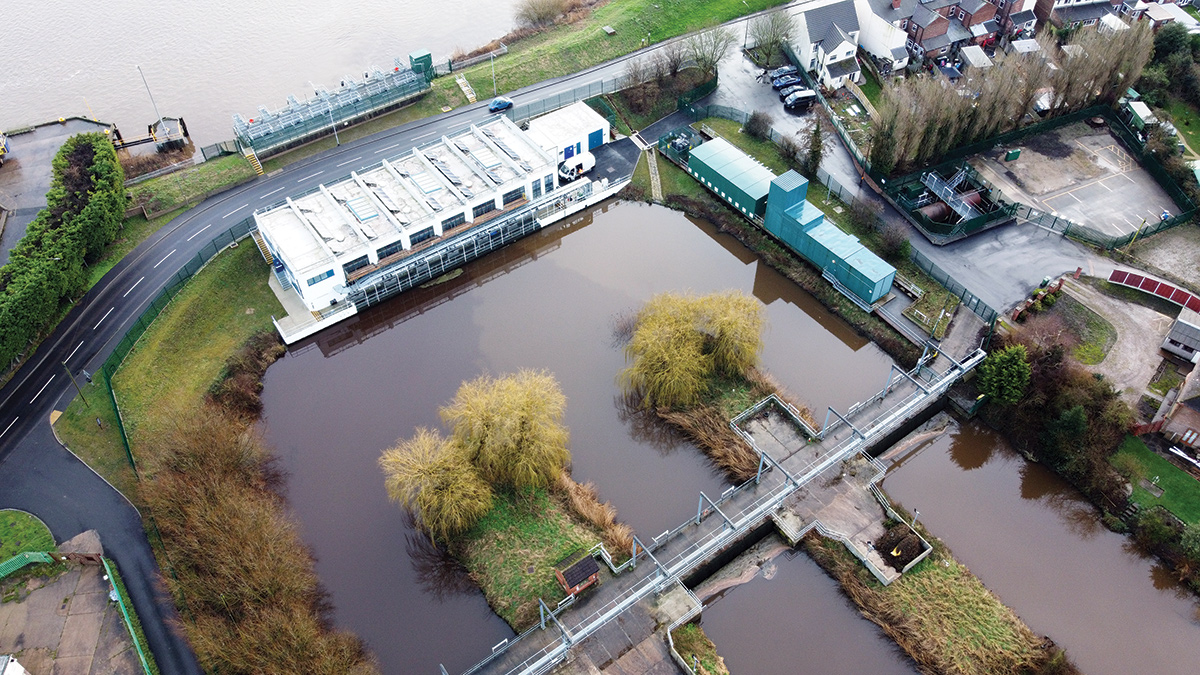
Completed site overview - Courtesy of GBJV Ltd
Keadby Terminal Assisted Outfall (TAO) is a strategically important asset, protecting homes, businesses and agricultural land from flooding in the Isle of Axholme. The TAO was originally constructed in 1939 and required upgrading and modernisation to ensure the continued operation of the pumping station as resilience and reliability had been lost due to age, obsolescence and general wear and tear, resulting in the need for a major investment. Keadby TAO is the outfall for the River Torne within the Isle of Axholme to the tidal River Trent. It originally comprised a gravity sluice which maintained water levels within the Isle of Axholme and discharged fluvial flow to the tidal Trent when tide levels permitted. High flows were pumped via six pumps, providing approximately 32m3/s discharge capacity when required.
Finding a viable solution
Previous business cases had failed to find a viable solution and detailed design work had developed plans for the project to completely renew the existing facility. However, multi-disciplinary teams from the Environment Agency, Arcadis, WSP and Galliford Try Binnies JV (GBJV) worked collaboratively to deliver value engineering achieving savings greater than £12m by re-using existing assets.
The new solution made a switch to fish-friendly electric pumps, avoiding the long-term management of fish and eel screening, and recommended refurbishing rather than replacing the station which would deliver environmental benefits, operational savings and a 90% carbon saving.
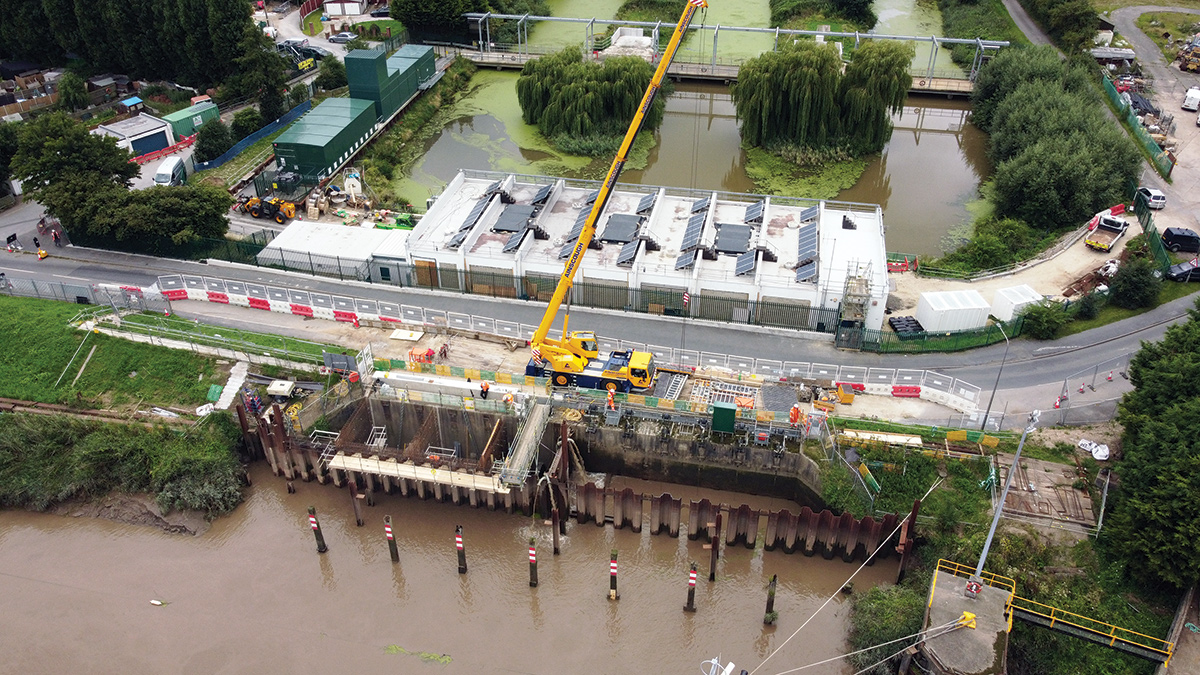
Outfall construction (November 2021) – Courtesy of GBJV Ltd
Project scope
The upgrade included:
- A comprehensive heavy electrical system replacement.
- Replacement of all pipework
- Replacement of the entire control system.
- The installation of six bespoke vertical lift pumps providing 19.2m3/s discharge capacity against a hydrostatic head of 3.7m when required.
- A complete redesign of the outfall structure to provide three individual discharge cells which will allow safe access to the twelve (1.8m wide) gravity/pumped culverts and twelve 1.8m tidal flaps for inspection and maintenance purposes.
The project team assisted in the development of the strategic case for investment alongside an update to the Isle of Axholme Flood Risk Management Strategy, and worked closely with the strategy asset management and delivery group ensuring that stakeholder engagement was central to the delivery of the project.
Undertakings
GB JV Ltd, a joint venture between Binnies UK Ltd and Galliford Try, has been the sole engineering design and build provider for the Outline Business Case (OBC), Final Business Case (FBC), and design/construction stages. This ‘cradle to grave’ approach has provided many benefits including the complex construction sequence document (for the whole scheme) created during the FBC which considered severe site constraints and proved an invaluable guide during the design and build phase.
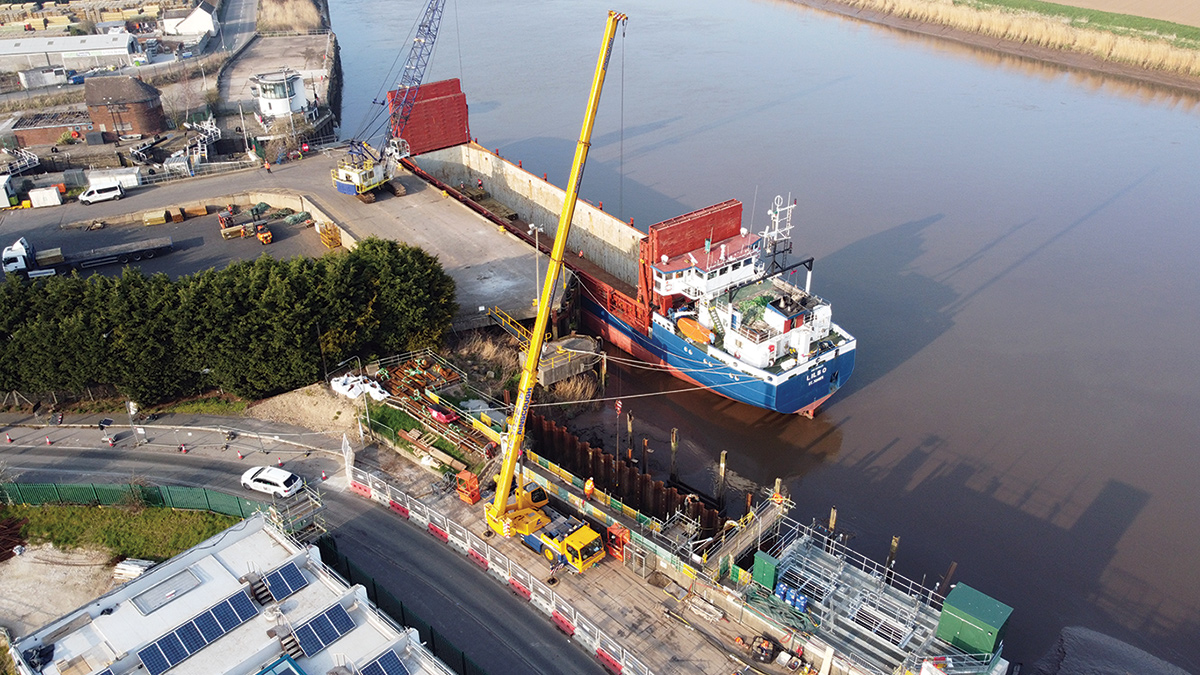
Outfall construction constraints – Courtesy of GBJV Ltd
Keadby Terminal Assisted Outfall Pumping Station: Supply chain – key participants
- Designer & delivery contractor: GB JV Ltd
- Binnies UK Ltd
- Galliford Try
- Client NEC project management: Turner & Townsend
- Client technical advisors: KGAL Consulting Engineers Ltd
- Client cost consultant: Arcadis
- Electrical enabling works: Fairfield Control Systems
- Sheet piling: Keltbray Ltd
- Mechanical installation: Alpha Plus Ltd
- Outfall construction: CPC Civils Ltd
- Electrical installation: Centrica
- MCC/PLC/HMI/SCADA & systems integration: Blackburn Starling Ltd
- Penstocks & flap valves: Glenfield Invicta
- Large knife gate valves: Ebro Valves Ltd
- Large knife gate valves: Stafsjö Valves
- Pumps: Pentair Fairbanks Nijhuis
- Stop logs: Aquatic Engineering Ltd
- HV switchgear: Midland Power Networks
- Transformers: Wilson Power Solutions Ltd
- Standby generator: YorPower Ltd
- GRP kiosks: Industrial GRP Ltd
Constructability challenges
The design involved constructability challenges as the Environment Agency operational team could only allow the release of two pumps at any one time to ensure that the operational plant was never compromised in terms of readiness for flood resilience. It also involved innovative fish pass solutions as site constraints prevented the use of traditional fish ladders and passes.
Binnies’ design team provided a solution which allowed the retention of the existing structure while completely refurbishing the installation. This was achieved by replacing the existing ‘carbon-hungry’ diesel-driven centrifugal flow pumps with electrically driven permanent magnet motors and vertically mounted axial flow pumps within the existing building envelope.
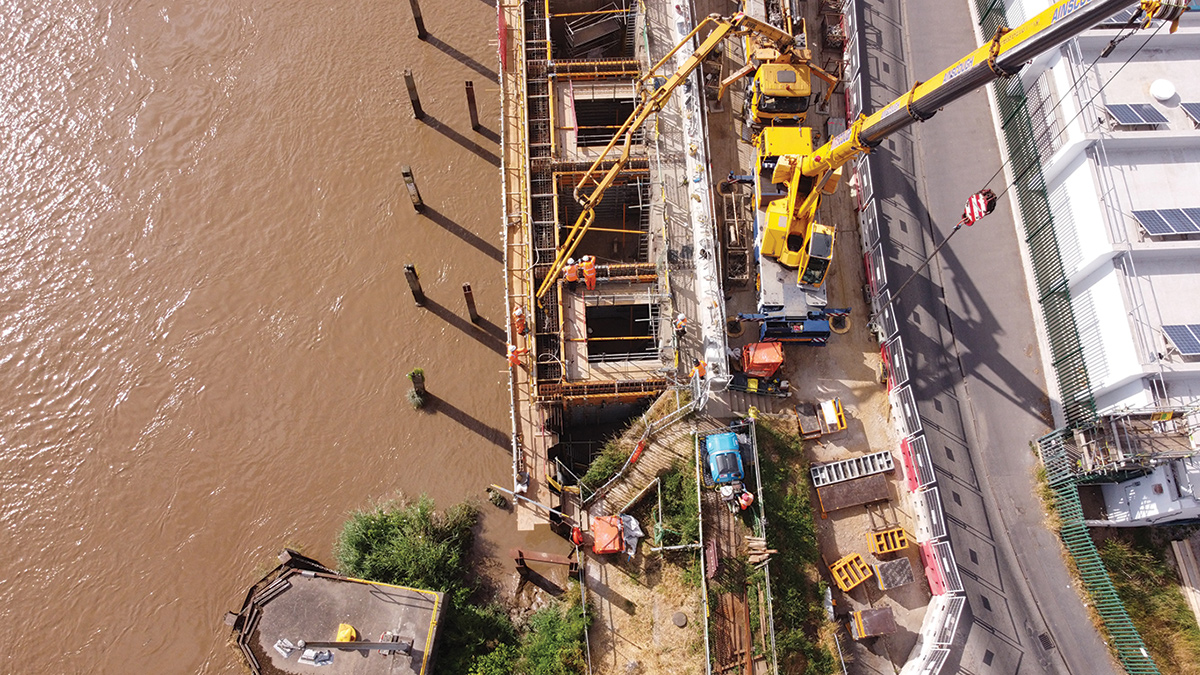
Aerial view of final pour – Courtesy of GBJV Ltd
Given the age of the buildings on site, the initial concept design was for the complete demolition of the existing reinforced concrete structure to make space for a new installation. A solutions-focused team looked at plans differently and included extensive early supplier engagement with pump suppliers that crucially unlocked the re-use of the existing structure; a cornerstone of the significant cost and carbon savings. A complete refurbishment rather than the replacement of the existing delivered effective resilience to future climate change.
Fish and eel friendly pumps
The existing facility presented a barrier for fish and eel migration and The England and Wales Eels Regulations (2009) required the installation to be upgraded to allow migration of elvers past the facility.
Accordingly, the fish-friendly pumps allow fish to pass downstream safely when pumping and an innovative ‘Elver Mode’ was added into the software controlling the sluicing operation allowing elver access during their migration period and subsequently safe passage into the Three Rivers Catchment and the wider Isle of Axholme, with 224km of main river available to fish and eel passage.
Pentair Fairbanks Nijhuis, the pump supplier, developed a fish-friendly impeller design that ensures fish are not struck on entering the pump, by incorporating vanes to guide them unharmed through the system. The impeller design in conjunction with the variable speed drives ensures optimal efficiency at all times. Low running speeds also improve passage for fish and reduce noise and vibration.
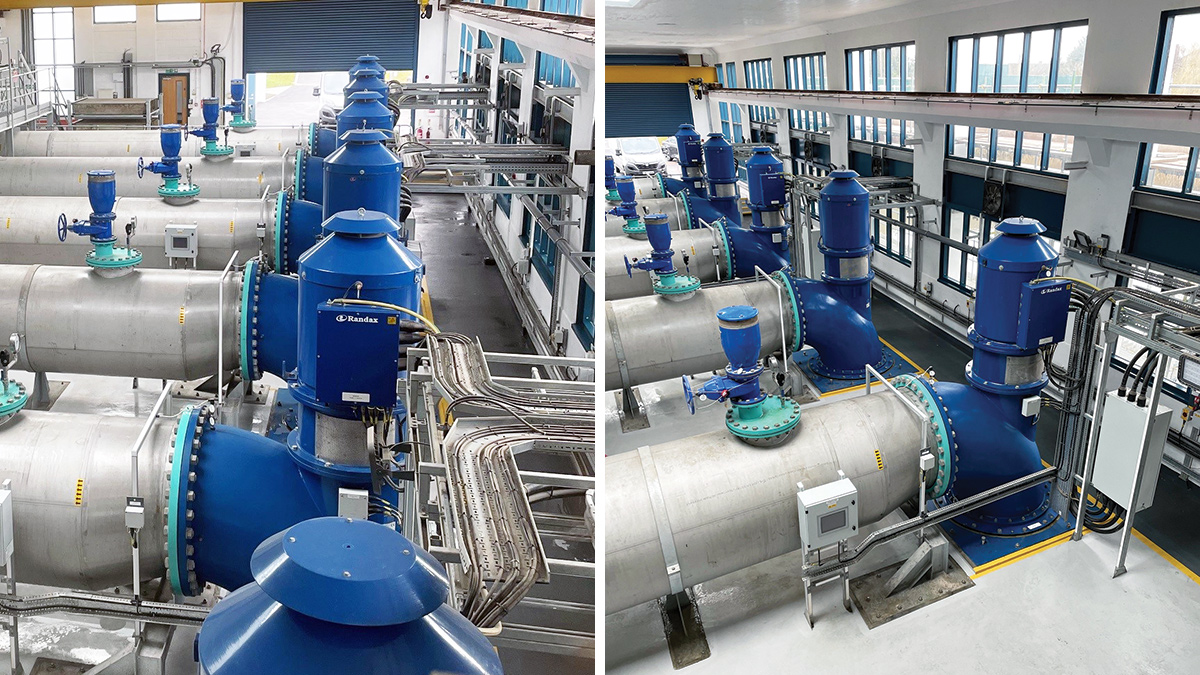
Pump hall – Courtesy of GBJV Ltd
Operational access
Binnies’ design has also improved operational access to the culverts and flap valves which previously posed significant health and safety risks. Previously, some areas were accessible only by divers and other areas have never been accessed since the TAO was commissioned in 1939 as it was considered too dangerous.
The improved operational safe design has minimised ongoing maintenance difficulties.
Outcomes
Through collaboration with partners and the supply chain the team delivered the OBC and FBC stages to time and budget winning the Best Business Case of the Year at the Environment Agency’s ‘Flood and Coast Excellence Awards’ (2019). GB JV Ltd attained partial sectional completion of the flood defence asset at the end of April 2021 (four pumps operational and available for beneficial use), resulting in the Environment Agency attaining 80% of its stated outcome measures; the reduction in flood risk to 2484 of the total 3105 properties to be delivered by this project.
The remaining 621 properties were realised in November 2021 upon successful integration of the two remaining pumps. This was achieved despite COVID-19 disrupting construction work and storms in 2019 and in 2020 when the Environment Agency needed to operate the diesel pumps to reduce flood risk to the catchment, preventing construction work for approximately three months.
The former pumping station had six large and dangerously loud diesel engines (over 98 dBA when measured outside with the doors closed) and emitted large amounts of exhaust fumes. It was not safe to be inside the building with the pumps operating (even with ear defenders). The building is within 100m of residential properties so pumping activities disturbed the local community.
The new pumps are much quieter with the standby generator designed to be less than 60dBA at 1m. As the pumps can run 24 hours a day for several weeks at a time, the local community have greatly benefited from the removal of noise and air pollution.
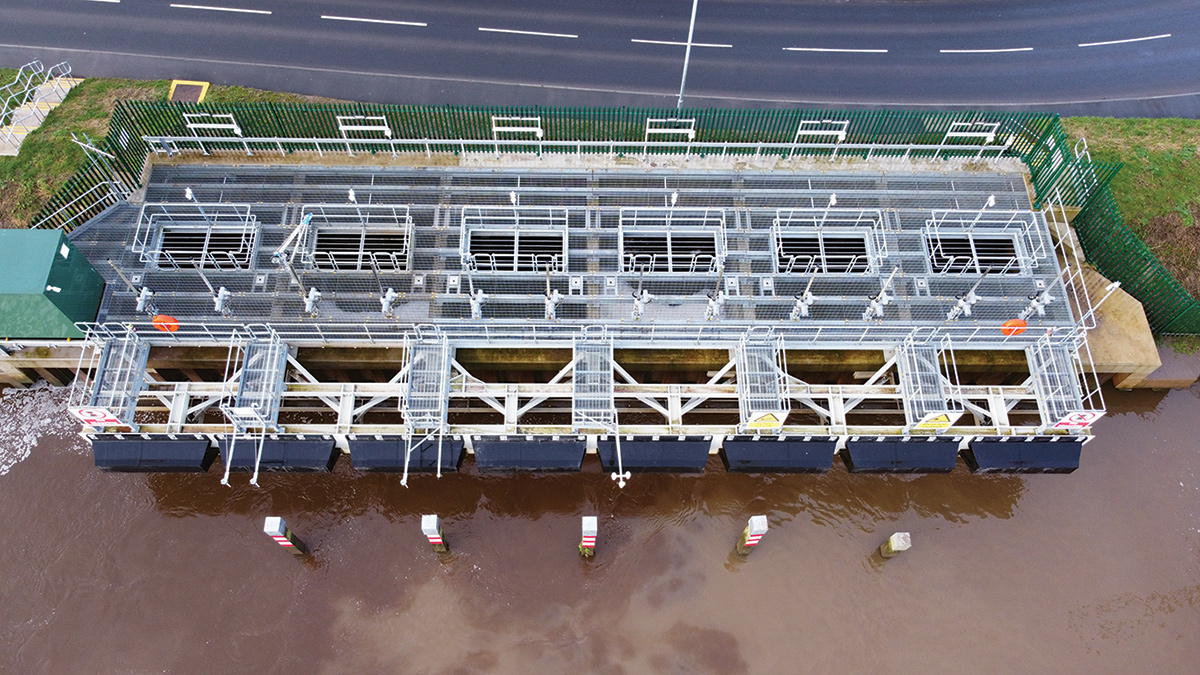
Outfall structure including fenders – Courtesy of GBJV Ltd
The site is immediately adjacent to the Port of Keadby on the tidal River Trent. Close management was required with both PD Ports Ltd and ABP who had equipment within the working area, so the team worked with the port to respond to and work around vessel movements and port operations. A new river fender structure was designed and installed to reduce the risk of damage to the outfall structure from berthing vessels.
In conclusion, the carbon footprint was reduced by 90% throughout the project’s lifecycle using modern efficient fish-friendly electric pumps negating the need for a 3mm eel screen and reduced ongoing lifetime operational expenditure by the use of the existing structure.
When COVID-19 restrictions prevented foreign travel to the pump supplier in Holland, the team implemented remote attendance to witness the programme-critical Factory Acceptance Testing, allowing us to maintain programme. This also enabled a wider team to witness the testing and provided a learning opportunity for team members that would not otherwise have been able to attend. The approach continued with Design Workshops that avoided the need for the Design Team to physically attend site, without compromising the quality of work. The reduced travel also contributed to carbon reduction.
Awards
The project has won a number of awards including:
Environment Agency ‘Project Excellence Awards 2019
- Winner Best Business Case of the Year at the Environment Agency’s ‘Flood and Coast Excellence Awards’.
- Highly Commended Asset Management Project of the Year at the Environment Agency’s ‘Flood & Coast Excellence Awards’.
Institution of Civil Engineers, East Midlands Branch
- Large Project Award 2023.
- Sustainability Award 2023.







